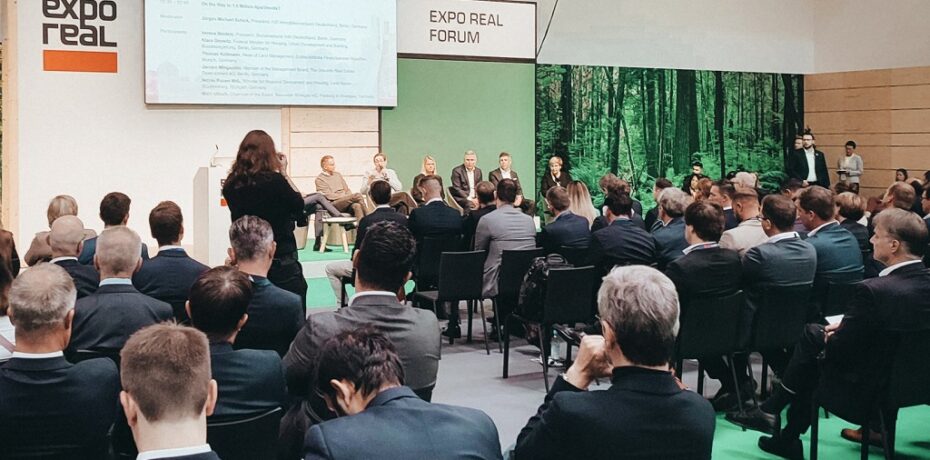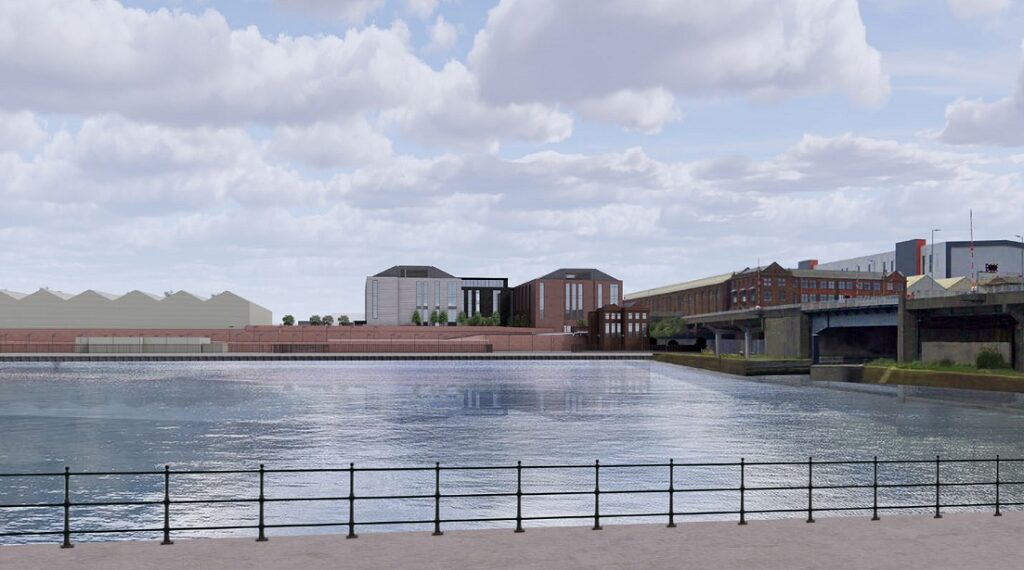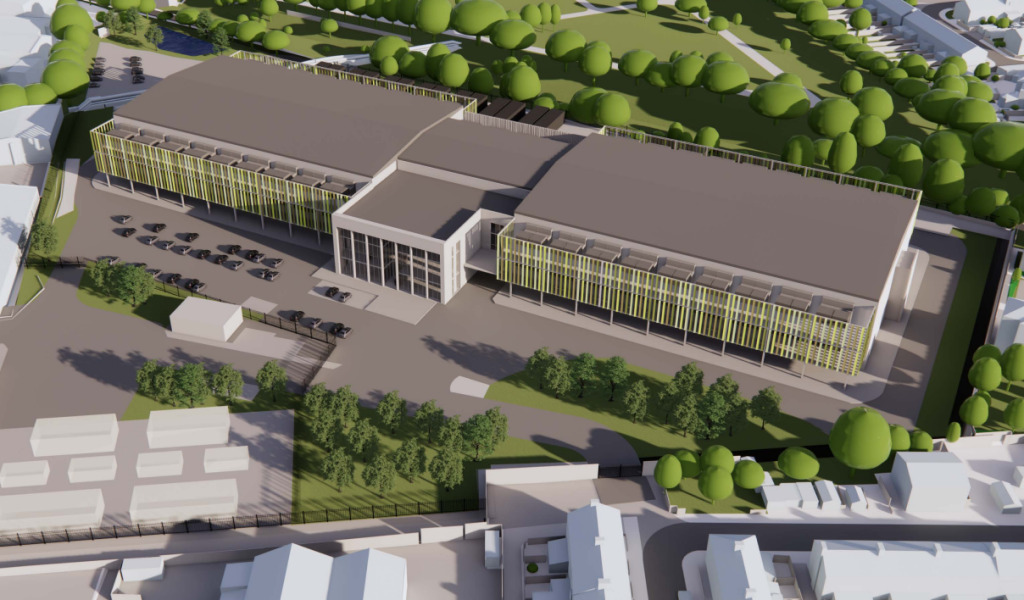Key takeaways from EXPO REAL 2022
 EXPO REAL welcomed almost 40,000 real estate professionals to Munich last week, writes Melis Karabulut of Spaceflow. The event was almost as buzzing as it used to be before the pandemic, and more engaging, fun, sustainable and progressive than ever before.
EXPO REAL welcomed almost 40,000 real estate professionals to Munich last week, writes Melis Karabulut of Spaceflow. The event was almost as buzzing as it used to be before the pandemic, and more engaging, fun, sustainable and progressive than ever before.
At the same time, I could feel the dilemmas hanging in the air through the whole show: When will we solve the affordable housing crisis? How to execute ESG steps? Where to invest, what to buy, and what to sell? Among so many, which technology solutions to choose, and why? Will office occupancy ever blossom again and how to attract tenants back?
It’s not all gloomy. We’ve observed that challenges around sustainability have brought an attitude of help-each-other-out in real estate. ESG is climbing up the list of priorities for real estate’s big names. The residential market remains exceptionally successful with occupancy regardless of rising rents and energy costs. Technology is becoming an inevitable part of the success plans of big portfolio companies, and there were more reasons to be cheerful…
Here are my key takeaways from EXPO REAL around the residential market, sustainability and technology.
1. Residential: High occupancy, higher rents… highest opportunities?
The takeaway: Residential market is booming with opportunities scattered in flexible and shared asset types as leading properties; while new developments will need to be postponed due to the economic downturn in the market regardless of the affordable housing demands.
Rented residential models such as student housing, build-to-rent, senior housing, micro living, co-living are flourishing due to risk diversification, increased urbanisation, mobility, number of single-person households and the comeback of community valuation after the pandemic.
Experts urged developers to build more student beds in continental Europe, especially in Poland, Germany, France, the Czech Republic and the Baltics. These are the locations where the competition in the purpose-built student accommodation landscape is lower. The occupancy rate is up to 98% and rents are rising the fastest.
Anne Sophie Vett Raaschou from NREP said “the lack of new development is exacerbating the supply gap in student housing as demand keeps growing. We have students living in tents because they cannot get a room, as the market in Denmark is so undersupplied.”
The main message from the majority of conversations is that regardless of the need and demand for more affordable houses, we won’t see much action in 2022 on a continental scale due to the political and economic struggles of Europe today. Depending on how cold and dark the winter will be in Europe, experts hope that new residential developments will pick up in 2023 again with a stronger focus on flexible housing models.
During the European Residential Investments panel, Mark Kuijpers from Greystar commented that ”rising costs will not detract from the desirability of residential investments in the long run. The underlying fundamentals of the residential market are strong and will remain strong.”
2. Sustainability: Top of the real estate agenda
The takeaway: Sustainability is climbing to the top agenda of real estate. Great practices are in the making, yet not equally adapted by all real estate companies.
The industry acknowledges that fast action is needed to become net-zero, for three main reasons: regulatory compliance, protecting the value of assets, and saving on energy spend.
Many companies aim at achieving net-zero goals by the 2050s, beginning with tracking the data on energy spendings, seeing where improvements can be made, and introducing more sustainable alternatives to their existing systems. Even though not all companies are there yet, some big names are paving the way and becoming an inspiration to many.
NREP is a great example of a firm with a net-zero target of 2028. It created the world’s first 100% recycled concrete building, and its current agenda is to develop the world’s first large-scale real estate project to align with all of the UN’s 17 Sustainable Development Goals. In a way to see the good in the bad and introduce an example, the company’s Anne Sophie Vett Raaschou underlined: ”We hope that the current energy crisis becomes a catalyst for more environmental awareness in the sector and reaching net-zero goals faster. The most sustainable way to live is to share buildings and live together. Shared living models such as student housing are great asset classes to test sustainability practices”.
Allianz Real Estate is another pioneer in sustainability as it targets a 25% reduction in global carbon emissions by 2025. The company’s main building asset in Frankfurt, a 37,000 sq m office complex has been awarded the highest ‘gold’ rating by the German Sustainable Building Counci in 2020. The asset is one of the first buildings in Germany to achieve this new certification.
While seeing actionable steps and key results will take a couple more years for the vast majority of the sector, it is a relief to see the steps in the making!
3. PropTech for sustainability and customer satisfaction
The takeaway: To make digital transformation more easily adapted by real estate companies, proptech companies should join forces, integrate their solutions and reduce fragmentation.
On the technology side, real estate operators and landlords are easing into the landscape.
One trendy use case of technology for real estate is tracking and assessing energy consumption data. ”We observe a shift from talking about data to actually using it. People now understand the importance of data and see its value, especially in improving sustainability practices,” said Martin Betts from NTrust on the proptech, data and innovation panel.
Another hot topic is increasing operational efficiency and customer satisfaction. Landlords are talking about customer experience even when their buildings are in the construction phase. They are looking into added values such as amenities, services and digital enablers that they can introduce to their buildings before their tenants move in. Here, they get help from proptech as well.
”If you wish to understand tenant needs and address them, and take a step further than your competitors, bringing in technology is inevitable. This even helps with building a strong brand that is focused on the end user, which will guarantee success,” underlined Lukas Balik from Spaceflow.
Both Balik and Betts point out the fact that the proptech solutions chain is very fragmented and companies build singular solutions that serve only one need, rather than offering a one-stop-shop. This results in confusion for real estate companies in choosing the most suitable solution to their multiple needs.
Their message is: proptech companies should be able to integrate their solutions into one another and cooperate in driving easy digital adaptation in real estate. If not, we will always face unwillingness of real estate companies to do anything digital.
- Melis Karabulut is partnerships and event specialist at Spaceflow







